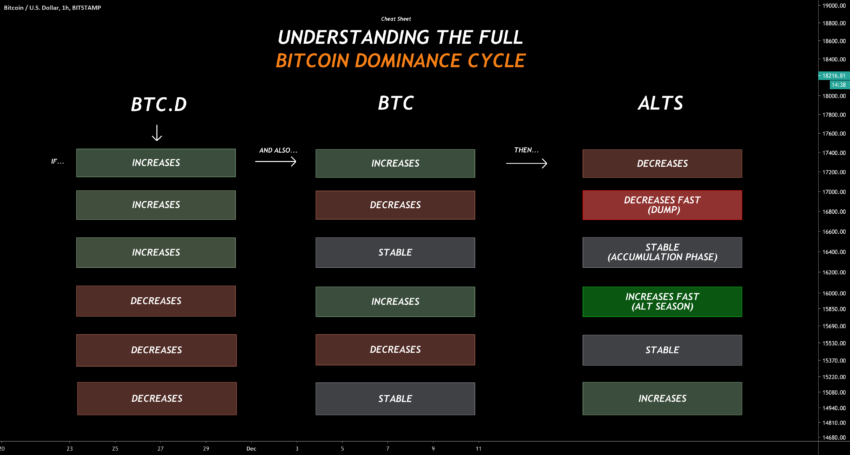Bitcoin: From Genesis to Dominance

In 2009, the world witnessed the birth of Bitcoin (BTC) – an enigmatic invention by the pseudonymous Satoshi Nakamoto. This revolutionary digital currency set the stage for a financial paradigm shift, transforming the way we perceive and trade value.
Bitcoin’s pioneering role in shaping the cryptocurrency landscape has been instrumental, carving a path for countless digital assets to follow.
Satoshi’s white paper outlined a peer-to-peer electronic cash system that aimed to address the flaws in the traditional financial system, such as double spending and the need for trust in centralized institutions. Its creation spurred a new era of financial innovation, setting the stage for a diverse and dynamic market.
The catalysts for Bitcoin’s meteoric rise
Decentralization and security: Core principles
At the heart of Bitcoin’s success lies its decentralized and secure nature. By using blockchain technology, it eliminates the need for central government, giving individuals financial autonomy. Bitcoin’s robust security is bolstered by a large network of miners, making it virtually impervious to attack, thus attracting investors seeking a reliable store of value.
Bitcoin’s security relies on a consensus mechanism called Proof-of-Work (PoW). Miners compete to solve complex mathematical problems, validate transactions and secure the network in the process.
This decentralized approach has stood the test of time, offering a level of protection that many other cryptocurrencies strive to emulate.

Limited Supply: The Gold Standard for Digital Assets
Bitcoin’s inherent scarcity, with only 21 million coins ever to be mined, mimics the properties of gold. This scarcity drives demand, contributing to its skyrocketing value. As mainstream adoption grows, the allure of owning a finite digital asset increases, further driving Bitcoin’s dominance.
The concept of halving, where mining rewards are reduced by 50% roughly every four years, further reinforces Bitcoin’s scarcity. These halving events create supply shocks, which historically have correlated with significant price increases, as we have seen in the bull markets of 2013, 2017 and 2021.
Media attention and brand recognition
The media’s fascination with Bitcoin has played a central role in its rise. The cryptocurrency’s meteoric rise captured the public imagination, making it a household name. Its brand recognition surpasses its competitors, making it the de facto leader in the digital currency space.
High-profile endorsements and investments from companies such as Tesla and MicroStrategy further cemented Bitcoin’s status. The surge in 2017, when Bitcoin reached almost $20,000, and the subsequent bull run in 2020-2021, reaching over $67,000, made global headlines, and sparked interest and curiosity.
The ripple effect: Bitcoin’s impact on the crypto market
The Altcoin Boom: Innovation and Diversification
Bitcoin’s success has spawned a myriad of alternative cryptocurrencies or “altcoins,” each with unique features and uses. This diversification has led to a booming market, with thousands of cryptocurrencies fighting for a piece of the pie. Despite fierce competition, Bitcoin remains the benchmark by which all others are measured.
Ethereum, for example, extended Bitcoin’s blockchain technology to create a platform for decentralized applications (dApps), allowing developers to build a wide range of solutions. Other altcoins, such as Ripple (XRP) and Litecoin (LTC), have focused on improving transaction speed and efficiency.
Shaping the regulatory landscape
As the leading cryptocurrency, Bitcoin has been both a catalyst and a litmus test for regulatory frameworks worldwide. Governments and financial institutions have had to adapt to the changing landscape, create rules and guidelines to ensure a safer and more compliant market.
Bitcoin’s influence on regulatory developments is undeniable and continues to shape the future of digital currencies.
For example, the US Securities and Exchange Commission (SEC) has taken steps to regulate initial coin offerings (ICOs) and cryptocurrency exchanges. Similarly, the EU has implemented the Fifth Anti-Money Laundering Directive (5AMLD), which extends regulatory measures to cryptocurrency service providers.
The Challenger Conundrum: Why Bitcoin Remains Unmatched
First-mover advantage and network effects
Bitcoin’s pioneering status gives it a formidable first-mover advantage. The vast network of users, miners and developers has created a self-reinforcing ecosystem that strengthens its position as the leading cryptocurrency. This network effect makes it increasingly difficult for new entrants to dethrone the reigning champion.
As the first and most widespread cryptocurrency, Bitcoin benefits from extensive infrastructure support, including a wide variety of wallets, exchanges and payment processors. This solid foundation enables users to access and use Bitcoin more easily than other cryptocurrencies, reinforcing its dominance.
The Lindy Effect: Longevity breeds confidence
The Lindy effect suggests that the future life expectancy of a technology is proportional to its current age. With each passing day, Bitcoin proves its resilience and longevity, solidifying its status as the digital gold standard. This enduring presence instills investor confidence, reinforcing Bitcoin’s dominance.
Bitcoin’s survival through a series of market cycles, controversies and regulatory challenges serves as proof of its durability. This resilience attracts not only retail but also institutional investors, who see it as a viable long-term investment option.
The Store of Value Proposition: A safe haven in a volatile market
Bitcoin’s reputation as a store of value has been crucial in maintaining its leading position. Amid economic uncertainty and market volatility, investors are flocking to BTC as a digital safe haven. While other cryptocurrencies may offer new utility, they have yet to adopt it as the premier digital asset.
Bitcoin’s ability to retain value during periods of economic turmoil, such as the COVID-19 pandemic, further cements its position as a store of value. The comparison to gold as “digital gold” highlights its potential as an inflation hedge, drawing interest from investors seeking long-term stability.
Bitcoin’s continued dominance
The evolution of Bitcoin from its inception to its current position of dominance is a testament to its resilience, innovation and influence. Factors such as decentralization, security, scarcity and media attention have propelled Bitcoin to heights that other cryptocurrencies have yet to reach. Its ongoing influence on the development and use of cryptocurrencies worldwide ensures its continued dominance.
From humble beginnings to its current status as the leading cryptocurrency, Bitcoin’s journey has been nothing short of remarkable. While the market continues to evolve and competitors emerge, Bitcoin remains the benchmark by which all other digital assets are measured. Its impact on the financial landscape is indelible, forever changing our understanding of money and value.
Disclaimer
In accordance with Trust Project guidelines, this feature article presents the opinions and perspectives of industry experts or individuals. BeInCrypto is dedicated to transparent reporting, but the views expressed in this article do not necessarily reflect the views of BeInCrypto or its employees. Readers should verify information independently and consult with a professional before making decisions based on this content.
























